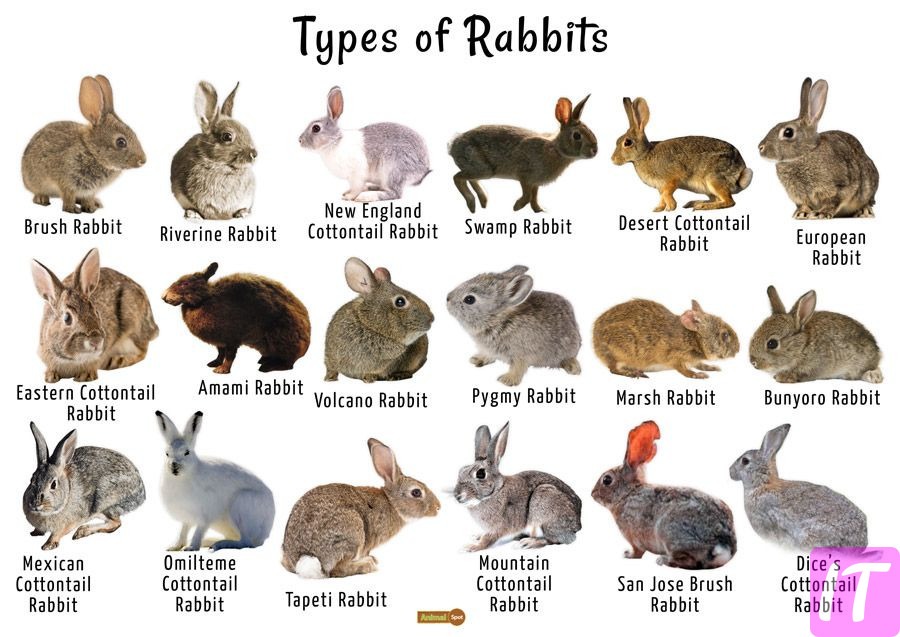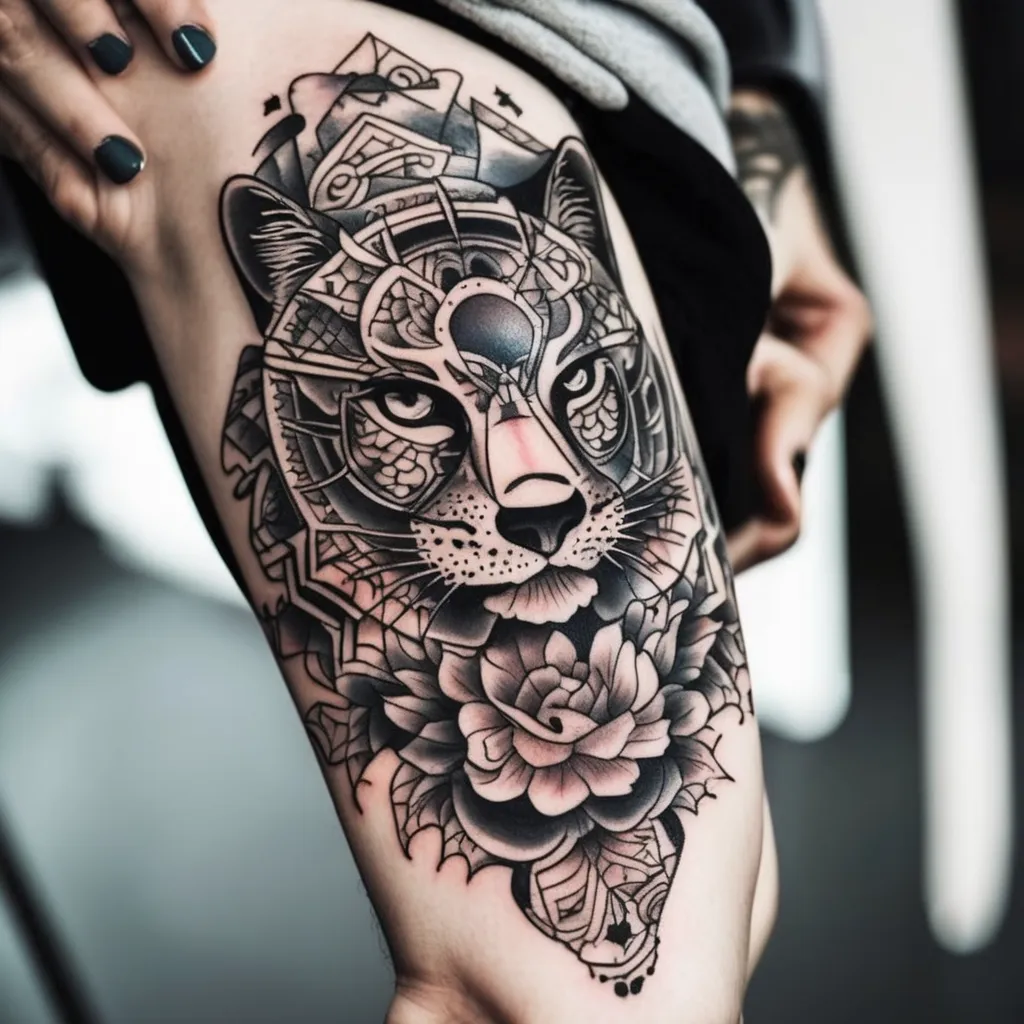With over 305 domestic rabbit breeds globally, the rabbit kingdom is more diverse than many might assume. This extensive variety spans from the diminutive Netherland Dwarf, weighing scarcely 1 kilogram, to the imposing Continental Giant, tipping the scales at over 7 kilograms. Their characteristics range widely, influenced by both environment and selective breeding.
Historically, the extensive breeding of rabbits commenced in the Middle Ages, driven by both utility and companionship. Some breeds, such as the Angora, were cultivated for their luxuriant wool, contrasting with the hardy Eastern Cottontail, renowned for its adaptability. Fascinatingly, the genetic variations among these breeds often lead to differences in lifespan, health predispositions, and even temperament, underscoring the complexity and intrigue of rabbit taxonomy.

Types of Rabbits in the World
Rabbits come in an astonishing variety of breeds, each with unique traits and characteristics. From the tiny, adorable Netherland Dwarf to the large, gentle Flemish Giant, there’s a rabbit for everyone. There are over 305 recognized breeds worldwide, each selectively bred for certain features. Some are valued for their luxurious fur, while others are praised for their friendly temperament. The diversity in size, color, and fur type among rabbit breeds is simply remarkable.
One popular breed is the Angora rabbit, known for its long, silky hair. Angora rabbits require regular grooming to prevent their fur from matting. They are often bred for their wool, which can be spun into yarn. Other breeds, like the Dutch rabbit, have unique color patterns and are known for their gentle nature. These attributes make them a favorite in many households.
Wild rabbits like the European rabbit play a significant role in ecosystems. They provide food for many predators and help with soil aeration through their burrowing habits. The Eastern Cottontail is another common wild species in North America. Unlike domesticated rabbits, wild rabbits tend to be more skittish. Their survival instincts make them fascinating to observe in natural settings.
Rabbit breeds can also be categorized based on their fur type. Some, like the Rex rabbit, have a plush, velvety fur that is highly prized. Others, like the Satin rabbit, have a smooth, glossy coat that shines under light. The variety in fur types adds another layer to the already diverse world of rabbits. Each breed’s unique fur characteristics contribute to its appeal and usefulness.
A Brief Overview of Domestic Rabbit Breeds
Domestic rabbits come in a wide array of breeds, each with its own unique characteristics. The Holland Lop, for instance, is beloved for its small size and floppy ears. This breed is known for being friendly and easy to handle, making it a great pet for families. Another popular breed is the Mini Rex, which features velvety fur that feels like plush. Their calm demeanor makes them a favorite among rabbit enthusiasts.
In terms of size, domestic rabbits can vary greatly. The Dwarf Hotot is one of the smallest breeds, usually weighing less than 3 pounds. On the other end of the spectrum is the Flemish Giant, which can exceed 15 pounds. These larger rabbits are often more laid-back and gentle. Their size can be surprising to those unfamiliar with the breed.
Domestic rabbits also come in a variety of coat types. The Lionhead rabbit is named for its mane-like fur around its head. This unique feature makes them stand out among other breeds. Another breed with distinctive fur is the Jersey Wooly. These rabbits have a wooly texture, similar to Angora rabbits, but are easier to groom.
The diversity among domestic rabbit breeds is showcased not just in size and fur type but also in color. Breeds like the Himalayan have striking color contrasts with dark points on a light body. The Harlequin, another colorful breed, features a mix of orange and black or white and black patches. Such vibrant coats make these rabbits eye-catching and unique.
The Evolution of Different Rabbit Breeds
The domestication and evolution of rabbit breeds have a rich history. Initially, rabbits were primarily bred for meat and fur, a practice that began in ancient Rome. Over the centuries, selective breeding focused on enhancing specific traits. This led to the development of diverse breeds tailored to human needs. Traits like size, fur texture, and temperament were carefully cultivated.
The medieval period saw an increase in rabbit breeding in monasteries across Europe. Monks selectively bred rabbits for their meat during fasting periods. This selective breeding led to the creation of distinct breeds with particular traits. The development continued through the Renaissance, as rabbits became valued for more than just food. Breeders began to appreciate aesthetic qualities, such as unique color patterns and coat types.
The 19th and 20th centuries were pivotal in the diversification of rabbit breeds. Breeders started to focus on companion rabbits, emphasizing friendly and manageable temperaments. This era saw the introduction of many new breeds, including the Mini Lop and the English Angora. Each breed was developed to meet specific needs or preferences, whether for companionship, show, or fiber production.
Today, breed standards are maintained by organizations like the American Rabbit Breeders Association (ARBA). These standards help ensure the consistency and health of each breed. Rabbit shows and competitions further promote breed development and public interest. The evolution of rabbit breeds is a testament to human ingenuity and the desire to create diverse and unique animal companions.
Characteristics of Various Rabbit Breeds
Different rabbit breeds showcase a range of characteristics, making each unique. For example, the Flemish Giant is known for its impressive size, often weighing over 15 pounds. This breed has a calm and gentle temperament. They make excellent pets for those with ample space. Their large, solid build makes them stand out among other breeds.
In contrast, the Netherland Dwarf is one of the smallest rabbit breeds, rarely exceeding 2.5 pounds. They have a compact body with a short, rounded face. Despite their small size, they are energetic and playful. These rabbits are quite popular due to their tiny size and adorable appearance. They require less space, making them suitable for apartment living.
The Angora rabbit is renowned for its long, luxurious fur, which is often used for spinning into yarn. These rabbits require regular grooming to prevent their fur from matting. The fur not only adds to their beauty but also provides a source of fiber. Angoras are generally calm and friendly. Their wool is highly valued in the textile industry.
Another distinctive breed is the Lop rabbit, characterized by its long, floppy ears. These ears can make them look perpetually cute. Lops come in various sizes, from the small Holland Lop to the larger French Lop. Their friendly and sociable nature makes them great pets. The unique ear structure set them apart from other rabbit breeds.
Some breeds have unique color patterns, like the Dutch rabbit. They typically have a distinctive white blaze on their face and evenly divided color on their body. Another striking breed is the Harlequin rabbit, known for its patchy, dual-colored fur. Both breeds are often show rabbits due to their eye-catching appearances. Their colors and patterns can vary widely, making each rabbit unique.
Rex rabbits are celebrated for their plush, velvety fur, which feels like a plush toy. They have a dense, short coat that stands upright, giving them a luxurious texture. Their fur lacks the long guard hairs found in other breeds. This breed comes in various colors and patterns. Rex rabbits are known for being very calm and gentle.
How Breed Influences Rabbit Behavior and Health
Rabbit breed can significantly influence both behavior and health. For instance, larger breeds like the Flemish Giant tend to have more docile and laid-back temperaments. This makes them ideal for families looking for a gentle pet. However, their size can contribute to joint issues as they age. Regular veterinary check-ups are essential to manage these health concerns.
Smaller breeds, such as the Mini Rex, may have different behavioral traits. They often exhibit higher energy levels and can be more playful. Due to their size, they require less food and smaller habitats. Despite their lively nature, they are prone to dental issues because of their small skull size. Ensuring they’re given proper chew toys can help manage this issue.
Certain breeds are more prone to specific health issues based on their physical characteristics. Angora rabbits, for example, require regular grooming to prevent wool block, a condition caused by ingesting too much of their own fur. Conversely, rabbits with shorter fur, like the Satin, have fewer grooming needs but can be prone to ear infections. Monitoring these aspects can lead to healthier, happier rabbits.
Behaviorally, some breeds are more social than others. Lop rabbits are known for their friendly and sociable nature, often seeking out interaction with humans. In contrast, breeds like the Netherland Dwarf can be more skittish and less inclined to social interaction. Understanding these behavioral tendencies can improve the owner-rabbit relationship.
Table:
| Breed | Behavior Traits | Common Health Issues |
|---|---|---|
| Flemish Giant | Docile, Gentle | Joint Problems |
| Mini Rex | Playful, Active | Dental Issues |
| Angora | Calm, Friendly | Wool Block |
| Lop | Sociable, Friendly | Ear Infections |
| Netherland Dwarf | Skittish, Independent | Health Monitoring Needed |
Understanding the breed-specific traits can help in providing better care. Behavioral characteristics can influence how well a rabbit adapts to its environment. Similarly, knowing the health issues typical to a breed can guide preventative care measures. This allows owners to create a more suitable living condition for their pets. Proper care and attention can extend a rabbit’s lifespan and enhance its quality of life.
The Role of Rabbits in Different Cultures and Societies
Rabbits have held significant roles across various cultures and societies throughout history. In ancient Egypt, rabbits were symbols of fertility and rebirth. They often appeared in art and mythology, reflecting their cultural importance. The same symbolism can be found in ancient Greece. Rabbits represented fertility due to their impressive reproductive rate.
In Chinese culture, the rabbit is one of the twelve animals in the zodiac. People born in the Year of the Rabbit are believed to be gentle, kind, and highly artistic. Additionally, the Moon Rabbit is a popular figure in Chinese folklore. The story tells of a rabbit that lives on the moon, pounding the elixir of life. This mythological rabbit represents immortality and resurrection.
In Western cultures, rabbits often symbolize innocence and playfulness. The Easter Bunny, for example, is a beloved character in many Western countries. It brings Easter eggs to children, representing new life and renewal. This tradition has deep roots in pre-Christian, pagan rituals celebrating springtime. Over time, it became integrated into contemporary Easter celebrations.
Indigenous peoples in North America also have stories featuring rabbits. The trickster figure in many Native American myths is often a rabbit or hare. These tales usually highlight the cleverness of the rabbit, teaching valuable life lessons. In some stories, the rabbit’s cunning allows it to outsmart predators and survive. These stories emphasize adaptability and intelligence.
List:
- Egypt: Symbol of fertility and rebirth
- China: Zodiac animal, Moon Rabbit myth
- Western Cultures: Easter Bunny, symbol of new life
- Native American: Trickster figure in mythology
Rabbits have also played practical roles in many cultures. In medieval Europe, they were raised for meat and fur. This practice continues in some rural communities today. Rabbits provided a reliable source of protein and materials for clothing. Their practical uses have helped sustain human populations over centuries.

Frequently Asked Questions
This section provides detailed answers to some common questions about different rabbit breeds and their characteristics.
1. How do I choose the best rabbit breed for my family?
Choosing the best rabbit breed depends on your family’s needs and living conditions. Smaller breeds like the Netherland Dwarf are great for families with limited space, while larger breeds like Flemish Giants require more room. Look for breeds known for their friendly nature if you have young children, such as Holland Lops or Mini Rex rabbits.
Consider each breed’s temperament and care requirements; some need regular grooming while others don’t. It’s also essential to think about how much time you can dedicate to interacting with and caring for your rabbit. Take these factors into account to find a suitable match for your family.
2. What is unique about Angora rabbits?
Angora rabbits are unique due to their long, soft fur that resembles wool, making them stand out among other breeds. This luxurious fur requires regular grooming to prevent matting, which can be a bit time-consuming but rewarding if maintained properly. Their wool is highly valued in textile industries for making specialty yarns.
This breed tends to have a calm and friendly temperament, making them excellent pets despite needing more grooming attention than other rabbits. If you’re interested in spinning your own yarn or appreciating unique animal fibers, an Angora rabbit would make a fascinating pet choice.
3. Why are Lop rabbits considered good pets?
Lop rabbits are favored as pets mainly because of their sociable and friendly nature, making them ideal companions. They enjoy human interaction and often thrive in environments where they receive plenty of attention and playtime. Their distinctive floppy ears add to their charm, earning them widespread popularity.
Lop rabbits also come in various sizes from small Holland Lops to larger French Lops, offering versatility depending on space available at home. They adapt well to indoor living but appreciate a secure outdoor area where they can explore safely under supervision.
4. Are there any health concerns specific to certain rabbit breeds?
Yes, specific health issues can affect different rabbit breeds due to their physical traits or genetic predispositions. For example, larger breeds like Flemish Giants may face joint problems as they age due to their size. On the other hand, smaller breeds such as Mini Rex might experience dental issues because of their compact skull structure.
Regular veterinary check-ups help detect potential health problems early and provide the necessary care promptly
. Breeds with long fur like Angoras need consistent grooming routines so that issues like wool block are avoided.
5., How important is social interaction for domesticated rabbits?
Conclusion
The world of rabbit breeds offers a fascinating glimpse into the diversity and adaptability of these charming animals. From the gentle Flemish Giant to the playful Netherland Dwarf, each breed brings something unique to the table. Understanding their characteristics helps in making informed decisions for pet ownership or breeding.
The evolution of rabbit breeds reflects human ingenuity and our ability to shape animal traits to meet specific needs. Whether valued for their fur, friendliness, or unique behaviors, rabbits continue to captivate and serve various roles in societies worldwide. Knowing their specific traits and requirements ensures healthier and happier rabbits under our care.







